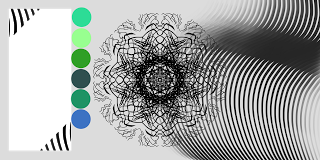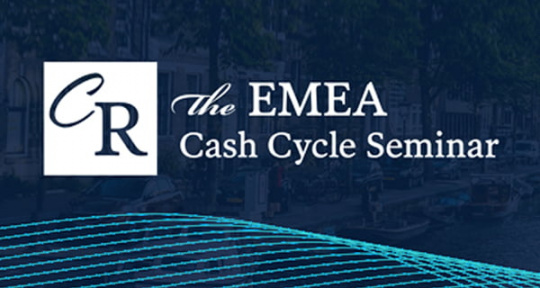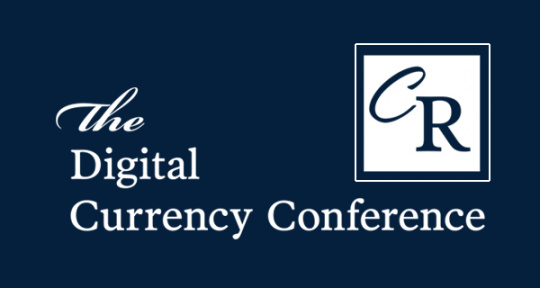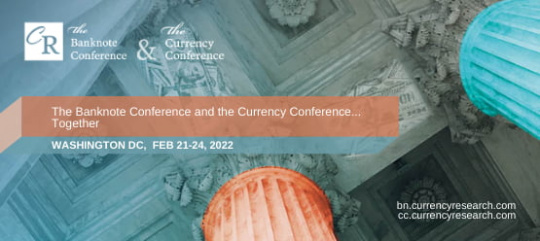
Modern Banknote as a Team Work Product
24.08.2016
Georgy Kornilov, SRI Director, gave the conference a kick-start, sharing his insight on global problems, linked with the development of high security printing as a whole, and the banknote industry in particular. It’s worth mentioning that the qualitative transformation of the world high security printing has been the issue for discussion many times over recent years, including at the last SRI conference. And over the last year, the trends, noted earlier, have gained even more strength and influence on the industry. So what are the challenges, which the industry is facing with?

Reduction in world production of banknotes
While the number of banknotes in circulation in our country and worldwide remaining fairly stable over the past years, sometimes people are talking about growth, giving often as an argument the cost factor. Certainly, these figures are increasing, as many high denomination notes are produced in the world, with the total number being more or less stable, and, to a great extent, correlating not with economic development, but with the population of a country, as well as with cultural habits related to the use of banknotes.
Another factor that negatively affects the production, is improvement of the substrate resistance due to more resistant paper, varnishing in the production of banknotes and polymer substrates. As a result, the life cycle of a banknote is growing, on average by 1.3-1.5 times, and the demand on new notes is naturally falling.
In addition, the majority of the central banks in developed countries, along with the others, introduce the so-called flexible sorting systems: criteria for banknote reissuing are reviewed, with the banknote life cycle, finally, increasing.
Therefore, today we see a global trend of production decrease while maintaining the number of circulating banknotes.
Alternative payment instruments impact
Over the past few years, we have seen that the number of transactions with both cash and non-cash assets, has increased,with the growth of non-cash transactions being much faster - even in this country, despite the tough economic environment, although it seemed to be otherwise. Nevertheless, non-cash payments in 2014 accounted in the total structure of retail transactions for about 19%, and by the end of 2015 it will reach about 22%. As soon as people begin to use plastic cards, the process will get a multiplier effect - at least, up to a certain extent. It is not yet clear, where are the limits for this process?
Let’s take, for example, Scandinavia, where only about 6% of retail transactions are carried out with cash, and 94% accounts for various non-cash payment instruments. Under these circumstances, some countries have started talking about abandoning cash as a mandatory payment instrument. Such a discussion took place last year in Denmark, with the country being on the verge of doing away with cash in retail outlets. Cash payments are on their way out in Sweden as well, where not everyone accepts cash. This trend is gaining momentum, but, of course, mainly in the developed countries and not in the developing ones.
A few years ago we were talking that there is no alternative to banknotes in the electronic sphere, assuming a set of benefits (anonymity, person-tpo-person transacrions, speed and finality of payment, etc.). But today, we must admit that the things have changed. There’s a huge amount of non-bank e-services that allow you to carry out free-of-charge transfers, often anonymously, not only for payments, but also for transactions between individuals. The key word is"non-bank", it means that a person, who uses these services, doesn’t need to open a bank account to carry out e-payments.
Last year witnessed an unprecedented interest towards cryptocurrency, in particular Bitcoin. Today it is not of interest only for "innovators" - the term from the theory of innovation - but "early followers" as well. The blockchain technology, serving the basis for bitcoin, is already considered by banks as a platform to create their own payment instruments. According to all existing evaluations, the blokchain is one of the major breakthrough technologies over the last two years, and in the short term it is expected to develop further.
This does not mean that bitcoin will replace cash, but there is a risk that on the basis of this cryptocurrency , new tools, competitive to cash, will be created. Today there’s no direct pressure of e-payments on cash is. However, it should be noted that the central banks pay more and more attention to the possibility of a direct issue of e- money. So, in 2014 the Central Bank of Ecuador was the first to take such a decision. We see that other issuing authorities, like the Bank of Canada, are theoretically interested in a possible issuance of money on the basis of the blokchain and e-currency. Central banks seek to optimize payment platforms. We can see it now in Australia, as well as in the U.S. where serious studies were conducted by the US Federal Reserve System. E-payment systems are designed to provide the same speed of transactions and the level of convenience as when using cash. Futhermore, all issuers recognize that the development of this area will undermine the use of cash, so it can be considered as a factor of pressure tomorrow.
Redundant printing facilities
Today we can talk about redundant banknote printing banknotes facilities in the world. At the same time, a number of major Asian and African countries are planning to build their additional banknote factories. The production costs for banknotes are reducing everywhere, and at the expense of the margin within printing supplying companies.
Taking into account all these trends, how the banknote industry can meet the challenges?
• First, from the standpoint of major commercial suppliers, there’s shift from the banknote production to complex solutions related to security features, banking banknote processing equipment, banking logistic solutions, retail banking technologies and retailers, integrated software, in particular for the analysis of big data and etc. In fact, we are talking about the creation of cash. "Cash ecosystem" is discussed at international conferences. Within this system, the interaction takes place on the machine level, almost without human intervention.
Central banks are starting to show interest in decisions related to big data processing. Big data, on the one hand, would allow to strengthen cash circulation, make it more flexible and convenient, and, on the other hand, - to prevent counterfeiting. This does not mean that a banknote will be tracked until the last client, but the analysis of big data will detect the region, type of counterfeiting, which appeared somewhere, and these pockets shall be quickly eliminated. Big data , as a trend, will evolve with regard to banknotes. And the creation of a database with serial numbers of banknotes, working with it, is an important task that could be realized.
• Second, increased competition in security feature designing and technologies is also a kind of response to the threats that exist in relation to the currency industry. Today, most large companies have already formed and offer their customers a set of security features, which by definition should include, for example, features, based on intaglio printing, micro optics, physico-chemical protection, etc. For example, a few years ago Crane introduced a really breakthrough feature Motion, with this technology, based on microlens, being adopted - in addition to Crane - by Giesecke & Devrient, De La Rue, Kurz and Arjowiggins.
• Thirdly, on the background of growing competition between the companies, we are witnessing, at the same time, mote than ever tight cooperation on the banknote production market. It’s already hard to find an enterprise that would be able to manage only their own . When it comes to establishing of a particular ecosystem, it’s simply impossible to have simultaneously micro-optics, chemistry, software for big data processing, well specialized printing industry, hologram production, etc. Among the latest trends is not only the team work in designing of house notes, but also cooperation in the issuance of banknotes, circulating in different countries. Modern banknote - is no longer the product of printers, but a team work product.
• Another response to the existing challenges for the industry is the development of mobile applications for banknote identification. There are already at least four solutions in this area, and we have, certainly, wide perspective in this area. At the same time, the approaches to banknote identification may be different: offline image processing, online system, a kind of track & trace system, applied for brand protection, etc. This shift to information and mobility, responding to people's needs, who, given the impact of mobile technologies on everyday life, may already be wondering why you can not just use the phone to get all the necessary information about a banknote. This trend, of course, will rapidly evolve.
Mr. Kornilov believes that all the above mentioned do not mean the end of cash in the near future. European countries ,they too, introduce new series. First of all, central banks will not do away with cash, as they get a considerable profit. Nevertheless, says Georgy Kornilov, the approach to notes may change significantly in the near future, and in the first place, these changes will concern informatisation.
Presentations of specialists from various departments of Goznak just became the best demonstration of how modern global trends manifest affect companies, which can be considered as a new impulse the company, what is the role of such areas as computerization and cooperation.
Nano-optical security technologies
E.Turkin, head of visual protection effects, talked about the results of more than a five-year cooperation between Goznak and the "Center of computer holography". As we know, security holograms manufacturing process comprises two main phases: production of an original (when the relief of a hologram is formed) and mass replication. And most of the security features is laid at the stage of manufacture of the original.
Recording of the original may be carried out using two fundamentally differing technologies: optical (analog or computer-synthesized) and lazer lithography.
Most companies are engaged in manufacturing of security holograms, using the original optical recording technology. This requires a relatively inexpensive and general equipment. But the equipment for lazer recording technology, on the contrary, isn’t widely spread in the world, it is a knowledge-intensive and very expensive. Microrelief in the latter case is formed by using a laser with an accuracy of 10 nm. It is important that this technology allows you to record both symmetric and asymmetric microfeatures (Fig. 1).

Here the question arises, what optical security features can be produced using laser lithography, why they are unique and how they are resistant to forgery?
In principle, all the optical security features are conventionally divided into elements for expert, visual and automated control. The former include microimages (100x100 mm), microsigns (20-50 microns), microtexts (5 microns) (Fig. 2).

And if you make a 20 micron inscription for the original, recorded using optical technology, is already a challenging task, then to get a microtext is almost impossible.
The requirements to visual elements are very simple: ease of control and resistance to imitations by commercially available technologies. The last five years have seen a widespread of visual security features with dynamic effects. Currently, there are two competing technologies: Motion by Crane and Mobile, which was developed by Goznak and the "Center of computer holography" and now more commonly used to protect banknotes. A special level of protection have Mobile security features, when dynamic effect changes is transforming in a color image when a banknote is tilted(Fig.3).





